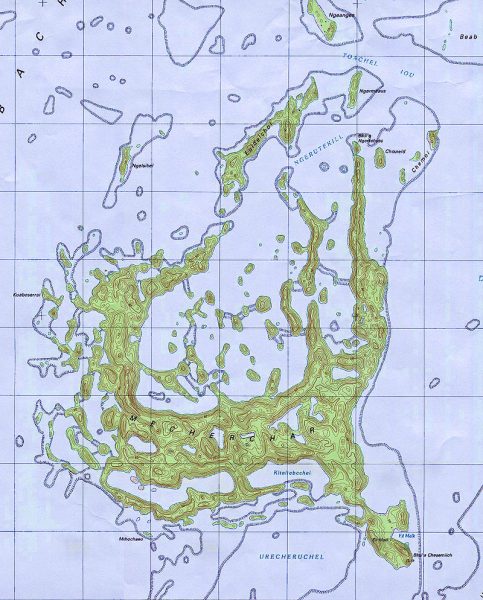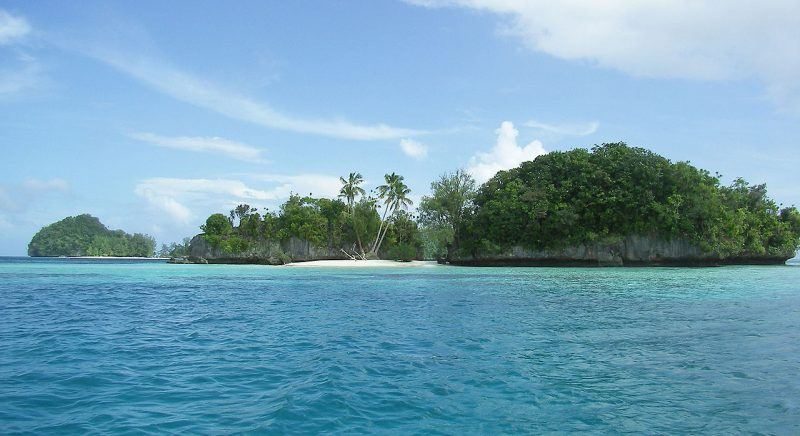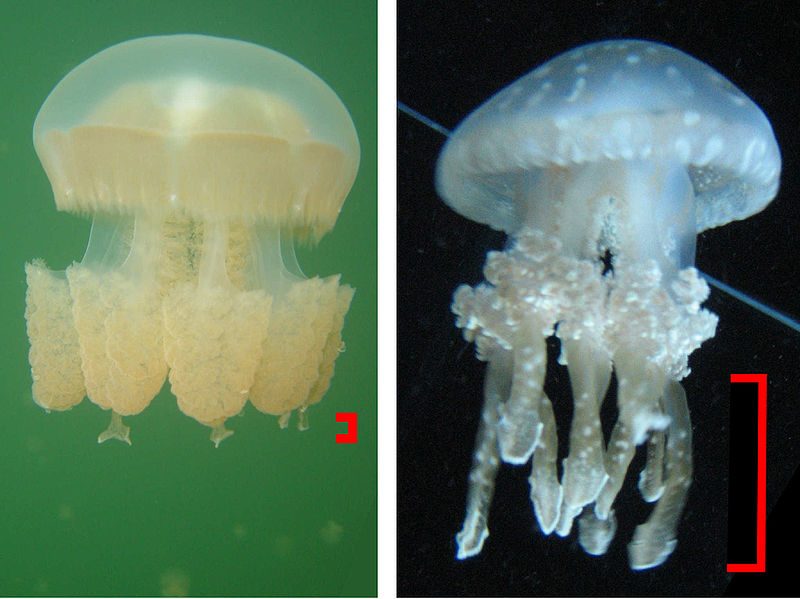Jellyfish Lake – the weirdest lake ever
The Republic of Palau is an island country in the western Pacific Ocean that contains around 340 islands. Eli Malk is one of the main islands in this archipelago, known as a home of the weird Jellyfish Lake. In Palauan, the name of the lake is the Fifth Lake. Millions of golden jellyfish migrate through the lake daily, following the path of the sun, which feeds the algae they feed on.
Jellyfish Lake is connected to the ocean through porous canals and fissures in the limestone of the ancient reef, though it has an isolated ecosystem different from the nearby lagoons. Being separated from the rest of the lakes made the species that inhabit Jellyfish Lake completely harmless for humans because their sting has weakened throughout the years.

This evolution of the jellyfish is a fascinating example of how a species can change. Jellyfish Lake consists of two distinct layers that never mix. The upper layer is oxygenated, and from 40-50 feet depth, the lower anoxic layer starts.
The division in layers is called stratification and is caused by many factors including:
- The many rocks and trees around the lake block any wind that could cause mixing of the two layers.
- The water sources that feed the lake are rain and tide flows through tunnels. As they are closer to the surface, they never reach the lower layer.
- Jellyfish Lake is in a tropical climate where the temperature changes are small and vertical mixing of the lake water never occurs.

Jellyfish Lake has three tunnels connecting it to the ocean, all close to the surface. They bring water in and out of the lake and maintain the salinity in the upper layer. The organisms like golden and moon jellyfish that need oxygen to survive live in the oxygenated layer. The anoxic layer is full of bacteria that can cause serious harm to humans.
Scuba diving in the lake is forbidden because the bubbles from the oxygen tank can harm the jellyfish. People who like snorkeling are very welcome to do so, floating around among millions of harmless jellyfish.
Golden jellyfish is a cousin of the spotted jellyfish, though they are different morphologically, physiologically, and behaviorally. They are easily distinguished from the spotted jellyfish by the almost complete loss of spots on the exumbrella. The golden jellyfish of Jellyfish Lake have a migration pattern that repeats every day. From early morning to 9:30 a.m. they move from the center of the western basin to the eastern basin. From early afternoon to 3:30 p.m. the jellyfish move from the eastern basin to the end of the lake. After sunset, they move back and stay at the western basin during the night.

In 1998 a disappearance of the golden jellyfish was reported. According to the scientists, the temperature rise during the El Niño phenomenon killed much of the algae that are necessary for the life of the golden jellyfish. In 2000 they appeared again in the lake. By 2012 golden jellyfish numbers returned to their prior levels.
If you want to experience something really different from all the other places in the world that you have visited then the Jellyfish Lake is what you need. Remember that scuba diving is highly forbidden – it could be dangerous for your life and also for the life of the jellies. Bring your snorkel equipment and enjoy an amazing unique experience. Good luck!
If you have any comments then please drop us a message on our Outdoor Revival Facebook page
If you have a good story to tell or blog let us know about it on our FB page, we’re also happy for article or review submissions, we’d love to hear from you.
We live in a beautiful world, get out there and enjoy it. Outdoor Revival – Reconnecting us all with the Outdoors.





